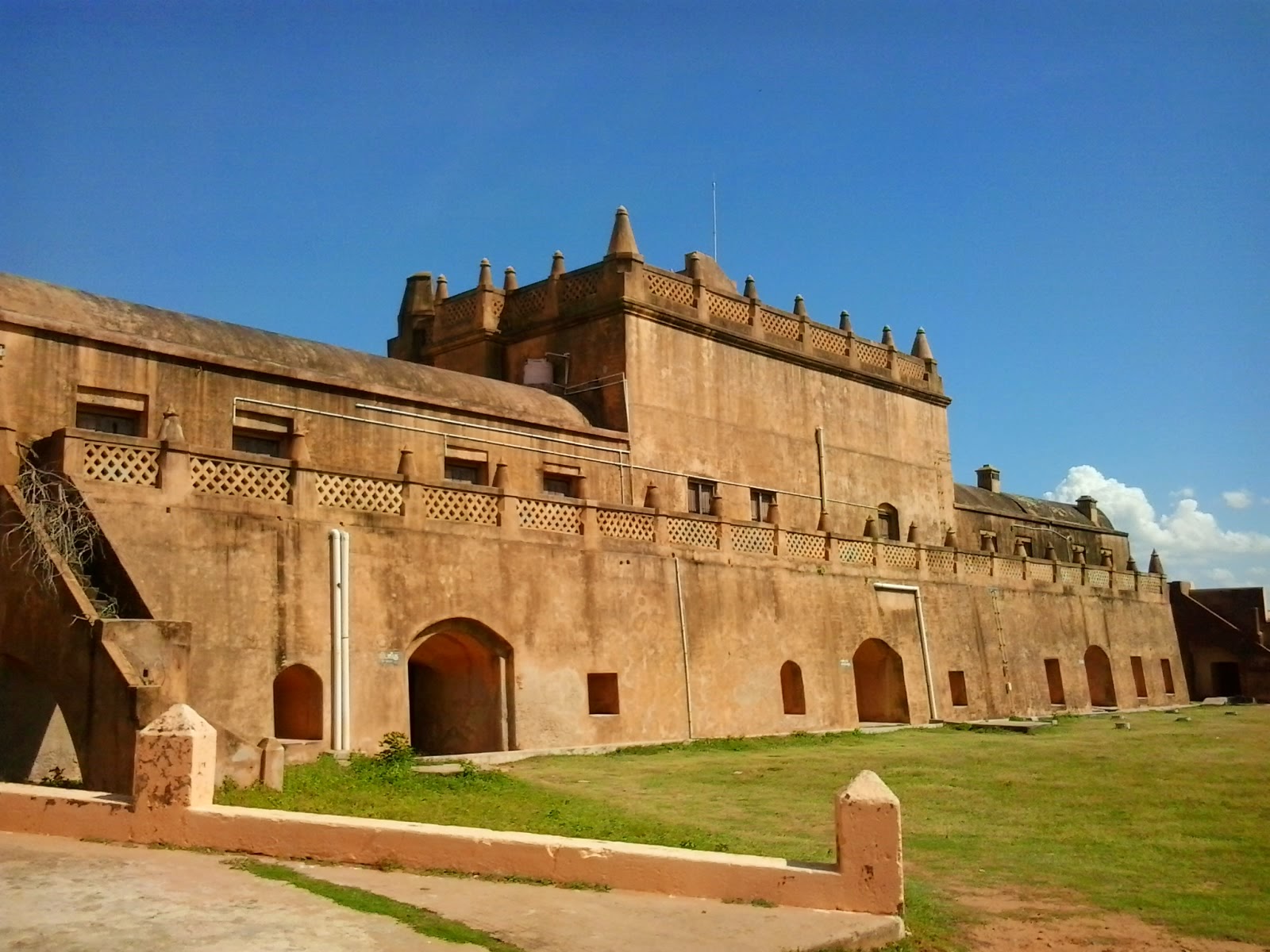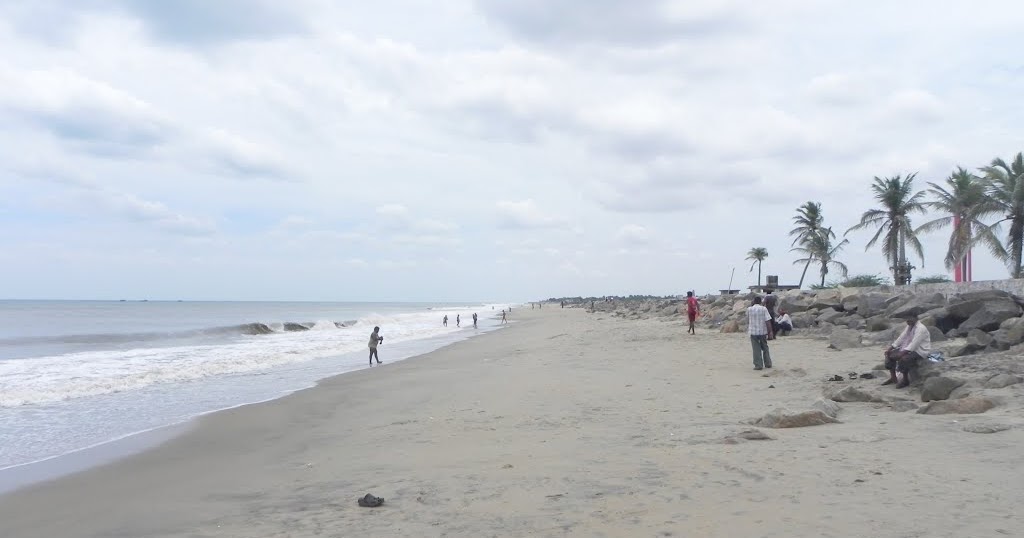Mayiladuthurai
For Mayiladuthurai Tours, Sightseeing & Hotel Booking CLICK HERE
Mayiladuthurai

History And Geography
The district is bounded on the north by Cuddalore district near kollidam, on the south by Tiruvarur district near kollumangudi, on the west by Thanjavur district near aduthurai, on the east by the Bay of Bengal and on the southeast near porayar by Karaikal district of the union territory Puducherry the Mayiladuthurai have many geographical resources Kollidam,kavery rivers flow here,flora and fauna like endangered species are also in protective areas of Kollidam
Tourism

Fort Dansborg, locally called Danish Fort, is a Danish fort located in the shores of Bay of Bengal in Tranquebar (Tharangambadi) in the South Indian state of Tamil Nadu. Fort Dansborg was built in the land ceded by Thanjavur king Ragunatha Nayak in an agreement with Danish Admiral Ove Gjedde in 1620 and acted as the base for Danish settlement in the region during the early 17th century. The fort is the second largest Danish fort after Kronborg. The fort was sold to the British in 1845 and along with Tranquebar, the fort lost its significance as the town was not an active trading post for the British. After India's independence in 1947, the fort was used as an inspection bungalow by the state government till 1978 when the Department of Archaeology, Government of Tamil Nadu took over the control of the fort. The fort is now used as a museum where the major artifacts of the fort and the Danish empire are displayed.
The fort was renovated twice in modern times, once by Tranquebar Association with the help of the Danish royal family and the State Archaeology Department in 2001 and secondly by a project named Destination Development of Tranquebar by the Department of Tourism of the Government of Tamil Nadu in 2011 in consultation with Intach, Pondicherry chapter. The fort is one of the prominent tourist destinations in the region. Puhar (also known as Poompuhar) is a town in the Mayiladuthurai district in the southern Indian state of Tamil Nadu. It was once a flourishing ancient port city known as Kaveri poompattinam, which for a while served as the capital of the Early Chola kings in Tamilakam. Puhar is located near the end point of the Kaveri river, aside the sea coast. It is mentioned in the Periplus of the Erythraean Sea. It has now been established by marine archaeological research (conducted by the National institute of marine archaeology, Goa) that much of the town was washed away by progressive erosion and floods. In the 1960s and 1970s, archaeological researches were conducted under the leadership of the noted archaeologist K. V. Soundararajan. Submerged wharves and several meter lengths of pier walls excavated in recent times have corroborated the literary references to Poompuhar. It was rebuilt several times after that. Ancient Pottery dating back to the 4th century BCE have been discovered off shore by marine archaeologists east of this town.How to reach Mayiladuthurai
By Road: Well connected by roads. By Rail: Mayiladuthurai Junction (station code: MV) By Air: The nearest airport is in Tiruchirappally at a distance of 109kms.
Places of Interest
Fort Dansborg
Fort Dansborg, locally called Danish Fort, is a Danish fort located in the shores of Bay of Bengal in Tranquebar in the South Indian state of Tamil Nadu. Fort Dansborg was built in the land ceded by Thanjavur king Ragunatha Nayak in an agreement with Danish Admiral Ove Gjedde in 1620 and acted as the base for Danish settlement in the region during the early 17th century. The fort is the second largest Danish fort after Kronborg. The fort was sold to the British in 1845 and along with Tranquebar, the fort lost its significance as the town was not an active trading post for the British. After India's independence in 1947, the fort was used as an inspection bungalow by the state government till 1978 when the Department of Archaeology, Government of Tamil Nadu took over the control of the fort. The fort is now used as a museum where the major artifacts of the fort and the Danish empire are displayed.
Poompuhar Beach
Poompuhar Beach is a natural and ancient beach located in Poompuhar, Tamil Nadu, India, along the Bay of Bengal. The beach starts from the Kaveri river and extends around 3 km north side towards Neithavasal. The sand of this beach spreads out around 3 kilometers. Recently granite stone has been placed on the shore to stop erosion. This beach and Poompuhar city plays an important role in South Indian history. Chitra Pournami is an important festival for this beach which happens during the full moon in Tamil, month chittrai. There also occurs a Holy dip in the mouth of Kaveri river is celebrated during new moon in the Tamil month of Thai and Adi. Mayiladuthurai is the nearest town which is located on the bank of Kaveri around 24 km away from this beach.
Sri Amirthagateswarar Abhirami Temple
This is a Hindu temple dedicated to Shiva in his manifestation as "Destroyer of Death" and his wife Parvati as Abhirami. It is located in Thirukkadaiyur (Thirukadavur), 21 km East of Mayiladuthurai, Tamil Nadu in India. This temple is associated with the legend of Shiva saving his young devotee, Markendeya from death, and the tale of a saint, Abirami Pattar a devotee of the presiding goddess. The presiding deity is revered in the 7th century Tamil Saiva canonical work, the Tevaram, written by Tamil saint poets known as the nayanars and classified as Paadal Petra Sthalam.
Tirumanancheri Udhvaganathar Temple
Tirumanancheri Udhvaganathar Temple is a Hindu temple at Thirumanancheri in Mayiladuthurai district of Tamil Nadu, India. The presiding deity is Shiva. He is called Udhvaganathar. His consort is known as Kokhila. Sri Kalyanasundareswarar Swamy Temple is another name for this temple. It is a shrine of the 275 Paadal Petra Sthalams, Shiva Sthalams glorified in the early medieval Tevaram poems by Tamil Saivite Nayanars Tirugnanasambandar and Tirunavukkarasar.
Sattainathar temple, Sirkazhi
Sattainathar temple, Sirkazhi (also called Brahmapureeswarar temple and Thoniappar temple) is a Hindu temple dedicated to Shiva located in Sirkali, Tamil Nadu, India. The temple is incarnated by the hymns of Thevaram and is classified as Paadal Petra Sthalam. It is an ancient temple complex with three different Shiva shrines in three stories.The Bhramapureeswarar shrine is housed in the lower level. The second level houses Periyanakar with Periyanayaki on a Thoni, hence the name Thoniappar. Sattainathar/Vatukanathar is also housed here. There are 22 water bodies associated with this shrine. Three different forms of Shiva are worshipped here, the Shivalingam (Bhrammapureeswarar), a colossal image of Uma Maheswarar (Toniappar) at the medium level, and Bhairavar (Sattanathar) at the upper level. The temple is associated with the legend of child Sambandar who is believed to have been fed by Parvathi on the banks of the temple tank. The child later went on to compose Tevaram, a Saiva canonic literature on Shiva and became one of the most revered Saiva poets in South India.
Vaitheeswaran Koil or Pullirukkuvelur
Vaitheeswaran Koil or Pullirukkuvelur is a Hindu temple dedicated to the Lord Shiva, located in the Indian state of Tamil Nadu. Shiva is worshipped as Vaidyanathar or Vaitheeswaran meaning the "God of healing" and it is believed that prayers to Vaitheeswaran can cure diseases. Vaitheeswaran is a Tamil derivative from vaidya (Doctor) and Ishvara (God/Master). The presiding deity is Sri vaidyanathan, facing towards West whereas East side is the common one. He is the God of Healing. When pronouncing in Tamil, it sounds like "vaideeswaran". It is one of the nine Navagraha (nine planets) temples and is associated with the planet Mars (Angaraka).
Mayuranathaswami temple
Mayuranathaswami temple is located in the southern part of Mayiladuthurai about a mile from the Kaveri River. The temple is on the Chidambaram–Thanjavur highway. It is one of the shrines of the 275 Paadal Petra Sthalams - Shiva Sthalams glorified in the early medieval Tevaram poems by Tamil Saivite Nayanar Tirugnanasambandar.
Swetharanyeswarar Temple
Swetharanyeswarar Temple is a Hindu temple dedicated to the deity Shiva, located in Thiruvenkadu, a village in mayiladuthurai district in the South Indian state of Tamil Nadu. Shiva is worshiped as Swetharanyeswarar, and is represented by the lingam. His consort Parvati is depicted as Brahmavidyambigai. The presiding deity is revered in the 7th century Tamil Saiva canonical work, the Tevaram, written by Tamil saint poets known as the Nayanars and classified as Paadal Petra Sthalam. It is significant to the Hindu sect of Saivism as one of the temples associated with the nine planet elements, the Navagraha Stalas, and specifically Budha.
Naganatha Swamy Temple
Naganatha Swamy Temple or Kethu Sthalam is a Hindu temple in the village of Keezhaperumpallam, 2 kilometres from Poompuhar. The presiding deity is Ketu, a shadow planet. However, the main idol in the temple is that of "Naganatha Swamy" or Shiva.